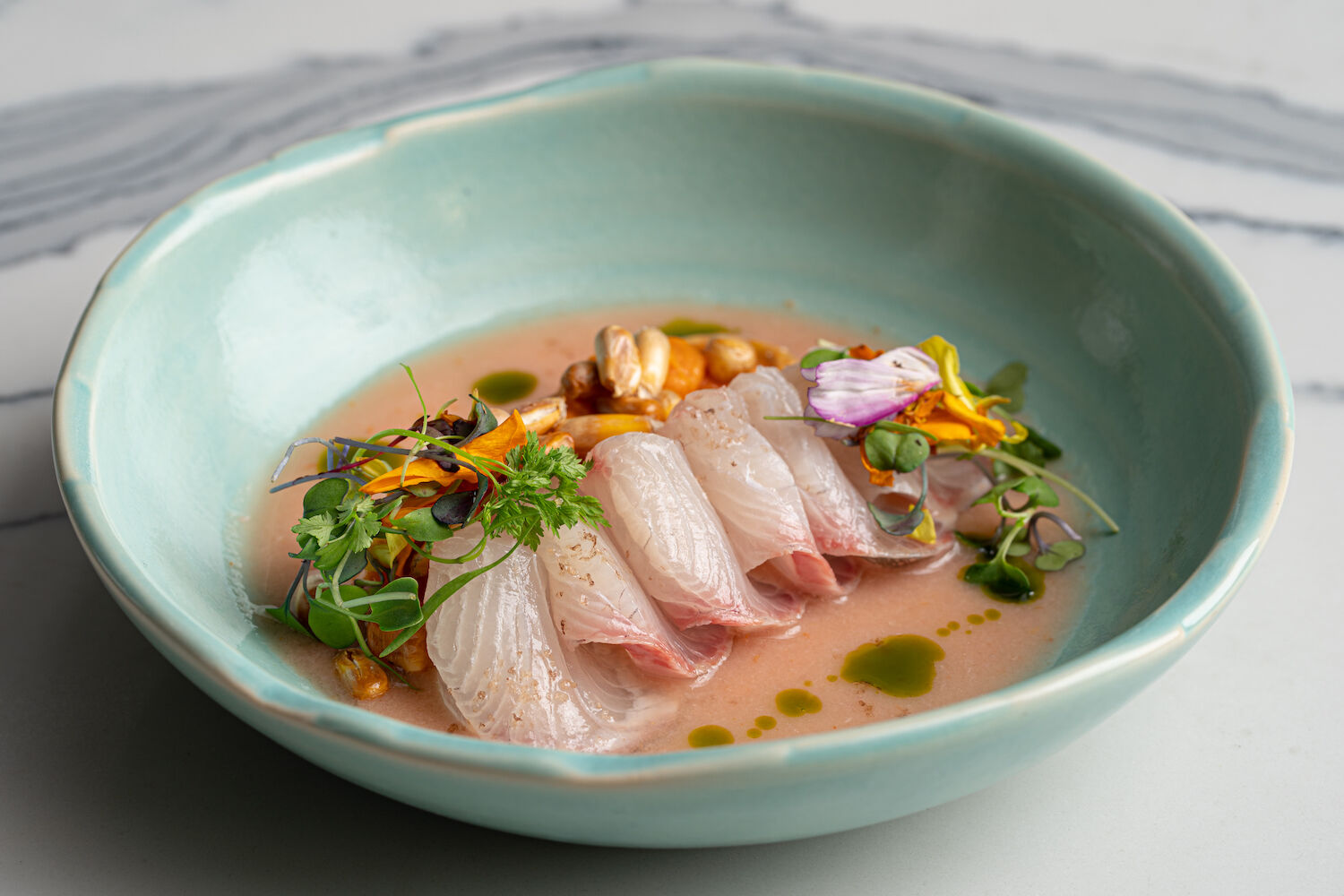
Lumi dry aged fish
Credit: Sam Wells
San Diego could be nicknamed America’s Freshest City. From locally-grown produce to freshly caught seafood, we have the climate and ocean access to make blank-to-table nearly redundant. But a coup is stirring from a few revolutionary chefs in San Diego who are taking fresh fish— the stuff that’s supposed to still be practically flopping when it hits the plate and—gasp—pausing the process.
Dry-aging to be exact.
And while dry-aging is hitting a tipping point in California, in Japan the technique has been used for hundreds of years. Because not only does dry-aging preserve the fish, the methods—when done correctly—improve the flavor and texture.
Several local chefs and fishmongers have been putting in the work to perfect their methods. Trailblazers like chef Davin Waite of Wrench and Rodent and fishmonger Tommy Gomes have been experimenting with dry-aging fish for several years. “Once people start tasting dry-aged fish, my bet is that it will take off,” Waite offers.
Dry-aged fish is already a staple at hot new restaurants like Marisi in La Jolla, and popping up on omakase menus around town at locations like Lumi, Glass Box, and Matsu.
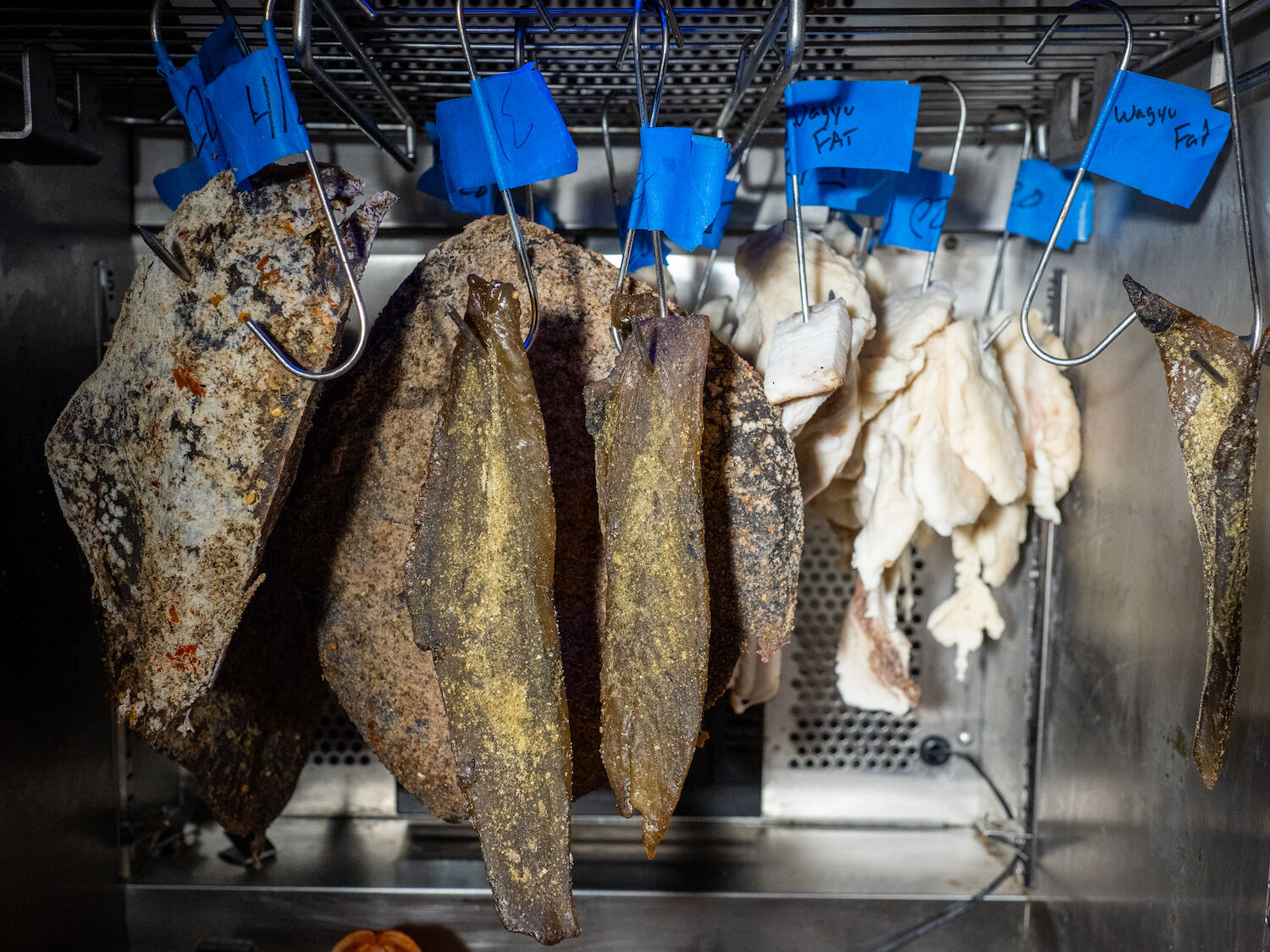
Wrench and Rodent
Credit: Oriana Poindexter
And while the idea of eating fish caught that morning is charming, fish can actually be too fresh. Rigor mortis lasts for a few days, so many types of fish need to relax to get the taste and texture generally associated with “fresh” fish. Dry-aging is said to improve the flavor of fish even further.
The process reduces the amount of water in the fish, intensifying the taste, while fat breaks down, becoming creamier. Instead of making fish taste “fishier,” the flavor becomes more robust with umami characteristics. Crispy skin and a firmer texture are other lauded attributes. Chef William Eick from Matsu describes, “It’s another tool in a chef’s pocket to brighten and deepen the flavor. It’s almost like adding more salt to the dish, without adding salt.”
Chef Roberto Alcocer, now helming Valle in Oceanside, began dry-aging fish for preservation at his restaurant in Mexico City due to his location away from the coast. “You see on the forecast that a storm is coming, so you know that there will be a few days without fish. In Mexico City, the fish has to fly to my restaurant, so dry-aging was essential so that we always had fish to serve,” says Alcocer. “Now, here at Valle it’s more about the flavor of the fish. A lot of people are uncertain about dry-aged fish, so we teach them about the process. At Valle I go a lot to the dining room to talk to guests, I invite them to the kitchen to see how it is being aged.”
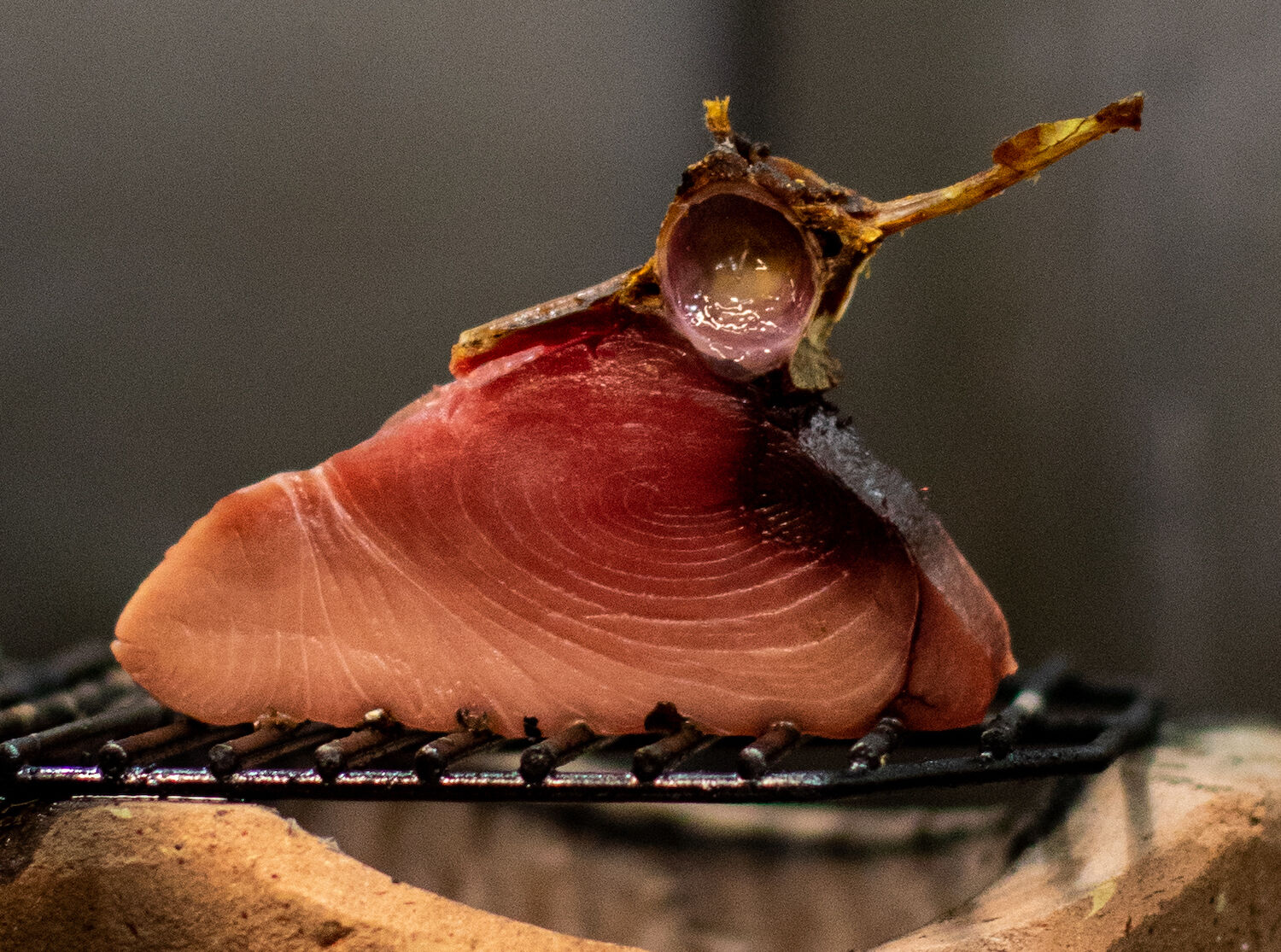
Matsu dry-aged fish trend
Courtesy of Matsu
“We started doing it with kanpachi. It takes about seven days; we gut and bleed the fish and leave everything else intact. We hang from the tail because there is a lot of blood in the head, and that way the blood goes out of the body,” says chef James Jung from Lumi of his approach to dry aging. “Hanging from the tail also gives a better yield. The Japanese kampachi is really good quality, but the kanpachi we’re sourcing here is from Baja. It’s a lot lighter with less fat content so dry-aging brings it up to the Japanese quality. When we have the kanpachi dry-aged, I like to serve two pieces to the guest, one fresh and one dry-aged, to showcase the difference.”
Since Lumi doesn’t always have the kanpachi dry-aged, you won’t find the description on the menu. Other restaurants are choosing not to call out the treatment because dry-aged fish doesn’t have the same name recognition as dry-aged steak… yet. On the Marisi menu, for example, the beef is described as sixty days dry-aged while their tuna crudo (also dry-aged in house) is not.
In many ways, dry-aging fish is similar to dry-aging steak (which begs the question of why our fetishization of freshness doesn’t extend to beef?), with a few differences. “Fish doesn’t have the fat content you have in meat, it takes a little more attention but the process is essentially the same and the result is even more worth it because you see a totally different texture in addition to the concentrated flavors,” chef Josh Mouzakes from Arlo explains. “It allows me to explore a whole different side of a new product.” At Arlo, that includes a swordfish “bacon” that is cured in salt and sugar for a week before being dry-aged for about three weeks.
Chef/owner Ethan Yang employed his prior practice with dry-aging beef to the nigiri and sashimi plates at Del Mar’s Glass Box. “People are shocked that the fish is a week old. The mentality for many is fresh is the best. However, when our guests try our aged fish, they love it and quickly convert. Because of the demand, we are only able to do basic aging of nine days. I would like to do more.”
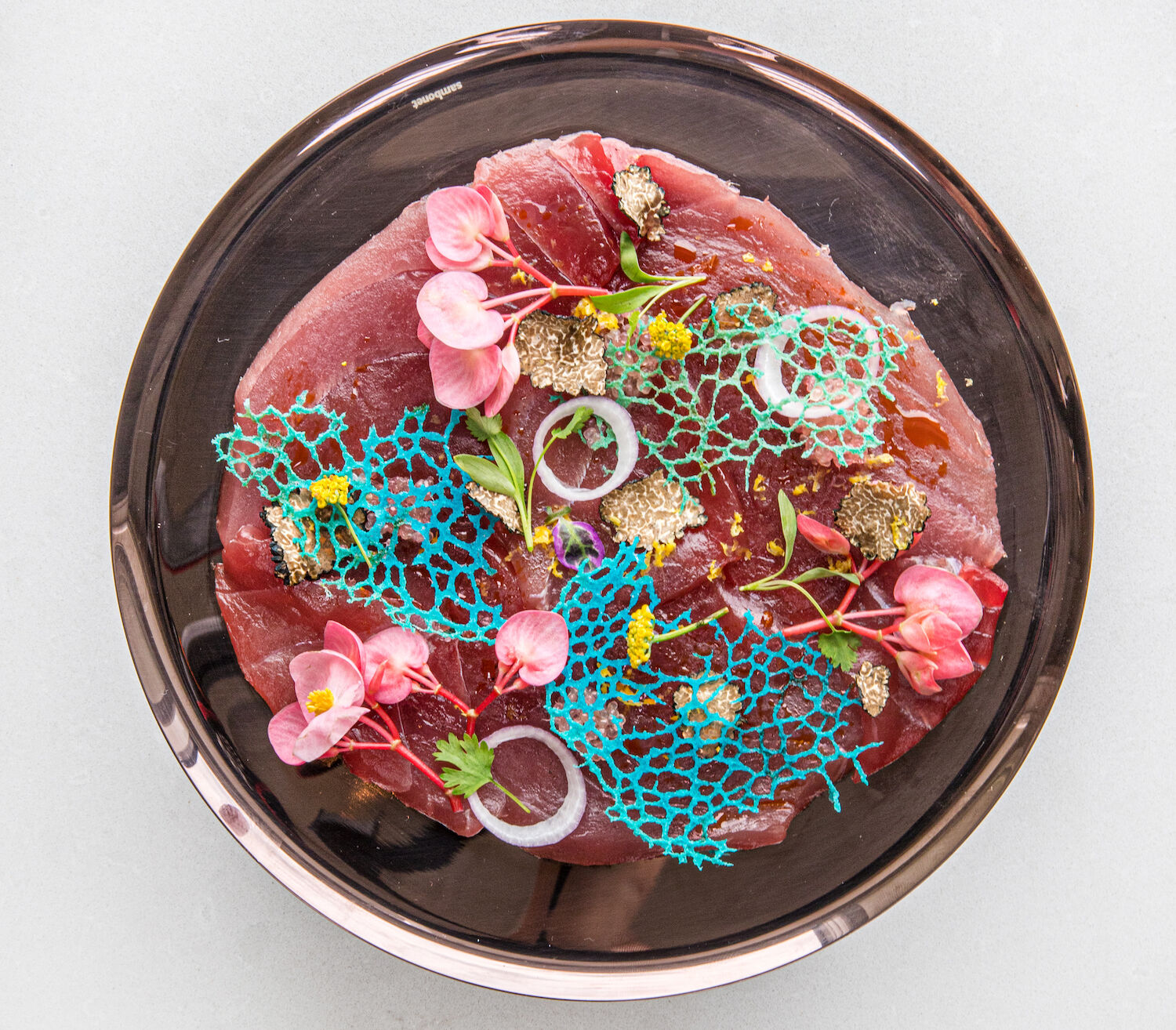
Marine Room, dry-aged fish
Courtesy of Marine Room
Chefs are selective about what fish they invest this much time and space to. Fish need to be handled gently from the time it’s caught so it isn’t bruised. It might sound counterintuitive, but starting with extremely fresh fish is also important. And since flavors are intensified, even knowing what a fish ate while it was alive is useful.
“Personally, I won’t dry age a fish unless I know the fisherman and how he treated it,” chef Eick says. “When it was caught, where it came from, even what it ate.”
The Marine Room, run by chef Mike Minor, added dry-aged tuna carpaccio to the menu for their new Marine Room Lounge. The Marine Room isn’t currently dry-aging the fish in-house due to space limitations but instead is working with a certified fishmonger who created a process specifically for the restaurant. However, the kitchen still needs to treat the fish differently. “You need to know how to properly store and cut the fish,” Minor explains. “It’s not the same as just buying fish and covering it up. It requires staying very cold and can’t be covered. We only cut the portion we are going to use and keep the rest drying. Dry-aged fish is all about respecting the fish.”
The challenge of how to dry-age fish in-house has led several of our local chefs to San Diego-based Steak Locker, which offers dry-aging fridges in three sizes that can be used in homes or commercial restaurants, making it easier for chefs (or home cooks) to experiment with dry-aging without as much of an investment of space and money.
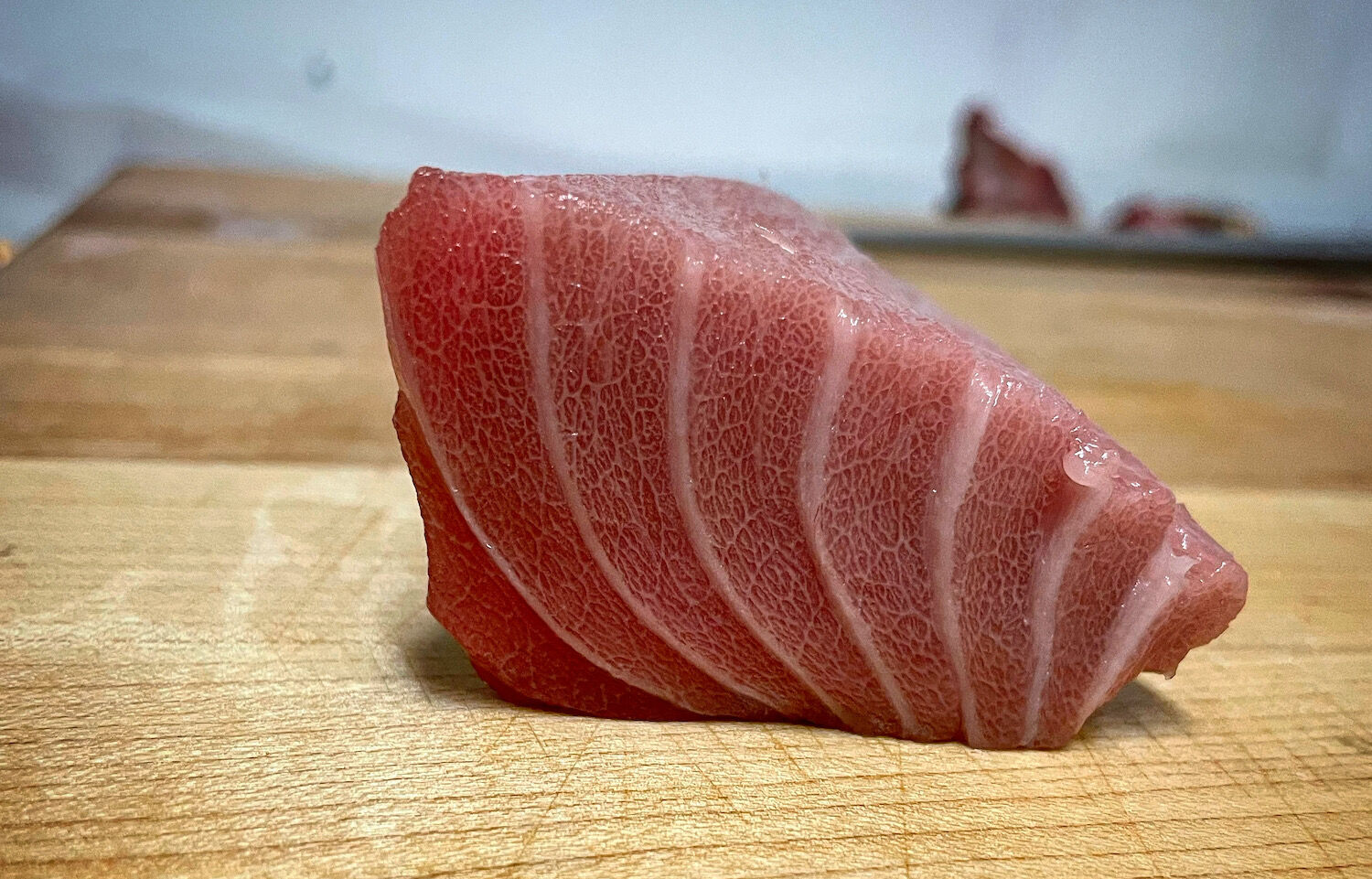
Matsu dry aged
Courtesy of Matsu
If you are interested in trying dry-aged fish at home, you can start by purchasing some dry-aged fish from fishmonger Tommy Gomes at his new TunaVille Market. Prepare the fish like you would un-aged fish and expect an effortlessly crispy skin, while keeping sauces and seasonings minimal since the flavor of the fish is more robust and complex.
Waite, who has served as an inspiration for several of the local chefs who are now dry-aging fish, is optimistic about the future of the technique here. “I think since San Diego has such a comfortable relationship with seafood, it’s easier to try new things,” says Waite. “We’re standing on the shoulders of people like Tommy Gomes, who started getting people to think differently about seafood. All it’ll take is the message to be put out there in an intriguing sort of way… then all we have to do is come along and make it taste good.”




















